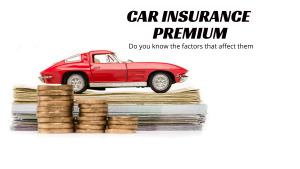Horsepower Vs Torque: Untangling the Intricacies of Car Performance

Although most vehicle buyers understand horsepower and torque ratings, some may not fully appreciate their importance. Though both must work in harmony for an engine to function effectively, their impact depends on your individual needs.
Simply stated, torque refers to the force required to perform work. One simple example of torque action would be opening a pickle jar by twisting its handle – an example that illustrates its effect.
How They’re Measured
Most vehicle models feature horsepower and torque ratings to give consumers a sense of their engine’s power; however, many drivers don’t fully comprehend how these numbers relate to actual driving or hauling activities.
Torque refers to the amount of twisting force something can generate, while horsepower measures its application. When opening a pickle jar by twisting off its lid, torque is used; similarly when pushing an overly heavy barbell overhead with all your strength is produced as torque lifts the weight overhead; though its strength depends upon how quickly force is applied by each individual user.
To determine torque in your vehicle, a device known as a dynamometer should be used. This machine measures how much twisting and accelerating force a motor produces at various engine speeds (RPM), before applying an equation to transform this data into horsepower figures.
If you want a vehicle with rapid acceleration, horsepower numbers should be prioritized over torque ratings. When hauling trailers or campers regularly, torque rating becomes essential in reducing stress on the vehicle and increasing its ability to pull. Most vehicles offer an ideal balance between these measurements to give drivers a safe, enjoyable ride.
How They’re Used
When comparing acceleration of various vehicles, towing capacity or vehicle handling characteristics between different brands or models, the difference between horsepower and torque becomes readily apparent. Horsepower measures how much force is produced at any one engine RPM range – multiplying torque times engine RPM gives us horsepower; higher RPM means greater horsepower figures.
Horsepower can be more easily understood than torque because it measures how quickly an engine accelerates; that means a vehicle with more power will have the capability of moving faster from stops or merging on highways than others.
At first glance, horsepower numbers might seem to be an accurate reflection of a vehicle’s capabilities; however, for a more comprehensive assessment, using a dyno that measures both horsepower and torque is necessary for accurate results.
Equipment like this may be costly, but it will enable you to gain a deeper understanding of how an engine performs and how it could improve. While horsepower may be important for winning drag races or crossing Germany at top speeds, torque remains key in everyday driving and hauling. In fact, they both play equal roles; so for a vehicle to function optimally it requires both.
How They Impact Acceleration
Assuming horsepower and torque are good ways of describing vehicle performance is simple enough; however, knowing what roles these figures play is crucial in making an effective purchasing decision for both yourself and your family.
Torque, or engine torque, refers to the force produced when your pedal hits the floor. As its peak occurs at lower engine rpms – making city and highway driving where most of us spend our time relevant. As an analogy, think of two 300-pound powerlifters lifting their barbell over their heads: one who grunts and pauses, while another can apply power quickly; this second lifter has more strength because they can apply it over less time but both lifters can lift similar weight.
Horsepower, however, is more essential when it comes to acceleration. Typically speaking, more horsepower means faster acceleration from zero to 60 and reaching its top speed. There may be exceptions (i.e. gearing and use of turbo/supercharger technology), but in general more horsepower means quicker acceleration.
How They Impact Towing
Your engine produces more torque as its size increases, meaning more power at lower crankshaft RPMs for hauling heavy loads and climbing steep inclines. Torque can be defined as exerted force that moves an object without moving it directly; when an object does move due to torque’s exertion it is known as work. Torque allows your vehicle to produce more power while using less crankshaft RPMs for effective power production – perfect for hauling large loads and climbing inclines!
Your horsepower number also dictates how quickly your car can accelerate from a stoplight or merge onto a highway when driving at normal speeds, while aggressive drivers with floor it acceleration could experience rapid acceleration from zero to 60 mph in just seconds!
While horsepower has an effect on acceleration, torque has an even larger influence over towing and overall car performance. Large SUVs and trucks that rely heavily on towing use diesel engines with high torque to move heavy loads up steep inclines – just as an athlete needs strong muscles to pull a trailer or camper trailer uphill! Gas engines with lower torque would place too much strain on these vehicles and cause them to break down more often; so the truck and SUV market has switched over to diesels because these can be more fuel-efficient while offering better towing abilities than their gasoline counterparts!



